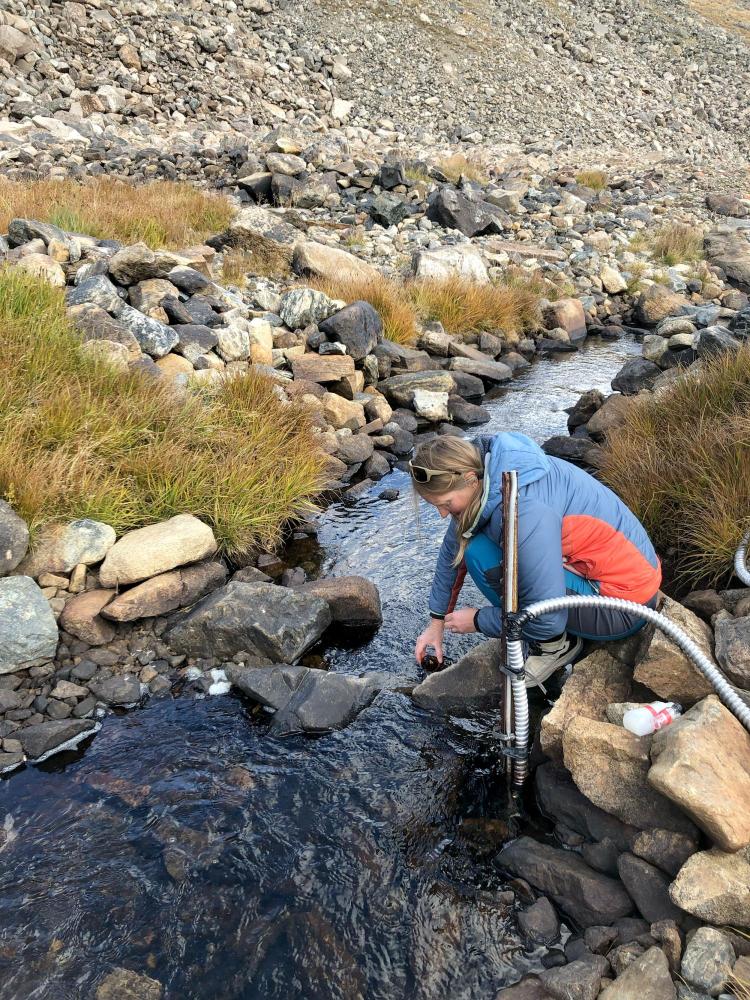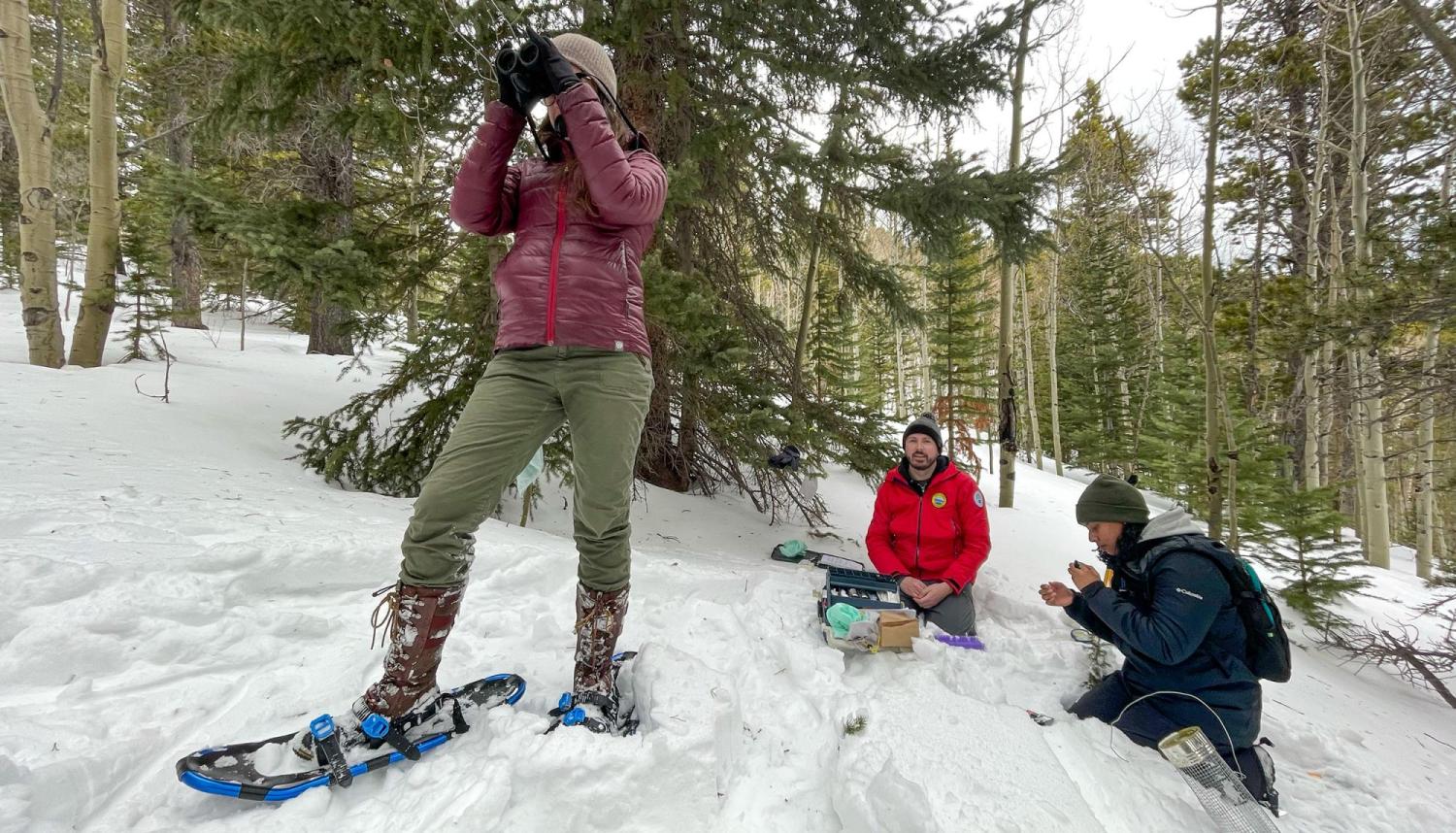Educating through an 'exceptional experience'

Research of mountain creek water by student. Photo by Scott Taylor.
Twenty-five miles west of Boulder, the Mountain Research Station has long been a hub for world-class research and education
A century ago, CU Boulder acquired 190 acres within the Roosevelt National Forest, north of Nederland, and instructors led field courses focused on geology, geomorphology and archaeology. Decades later, the study of ecology became central and the Mountain Research Station (MRS) became a premier hub for research on the unique processes and shifting aspects of mountain ecosystems.
During that time, several long-term ecology projects and programs were launched, including what became the Institute of Arctic and Alpine Research (INSTAAR), which still partners with the MRS. Today, the station continues to host some of the most influential and long-running ecological research in the world. Researchers still maintain weather stations where they gather data year-round on temperature, atmospheric carbon dioxide and more.
Those long-term records, which are used by researchers around the world, underlie the global significance of the MRS and its importance for understanding climate, said Scott Taylor, station director and associate professor of ecology and evolutionary biology.
Providing educational opportunities in a ‘classroom’ unlike any other is the MRS’ dual mission, according to Taylor. Students can learn about mountain environments with a collection of multi-disciplinary undergraduate and graduate field courses in biology, geography and geology—and with newer courses like art and the environment. “The MRS combines this really amazing research with education that exposes students to how we actually collect data and why long-term projects matter,” said Taylor.
The station also links the public to knowledge about those important ecosystems. A new set of interpretative trails was recently completed, and the MRS’ Summer Seminar Series showcases world-class researchers discussing a range of topics.
The big picture on Niwot Ridge
For decades, the MRS has been a stepping-off point for researchers studying plant and animal ecology, biogeochemistry, hydrology, geomorphology and atmospheric science. Much of that research takes place on rugged, nearby Niwot Ridge–a remarkably diverse 1,775-acre UNESCO Biosphere Reserve. Within that area lies every type of alpine and montane ecosystem that exists in the southern Rocky Mountains.
That abundance has made Niwot Ridge a rare and important ‘living laboratory’ and, for decades, researchers have studied the surrounding subalpine coniferous forests, alpine tundra, lakes and moraines, glaciers and glacial landforms, cirques, talus slopes and permafrost. Add dozens of species of flora and fauna and you have a real scientific asset, said Taylor.
Researchers working on Niwot Ridge have long been committed to understanding how the ecological fabric of alpine environments are knitted together and that has put them at the forefront of examining the effects of changing climate.
One highlight of that ongoing research is the Niwot Ridge Long-Term Ecological Research Program (LTER), a National Science Foundation project established in 1980 and focused on discovering the mechanisms driving ecological stability in mountain ecosystems, according to Nancy Emery, principal investigator and associate professor in ecology and evolutionary biology.
On Niwot Ridge, researchers can observe when and how environmental changes lead to ecological shifts, to better predict the future of critical services that mountains provide, and to help conserve and manage alpine habitats in the decades ahead, said Emery.
The collaboration and support between the MRS and LTER have been invaluable to researchers and students for decades and continue to be, said Emery. “It’s more than just your typical field trip–it’s a really exceptional experience.”

The Mountain Research Station field research project on snowy mountain. Photo by Georgy Semenov.
Principal investigators
Scott Taylor; Nancy Emery
Funding
National Science Foundation (NSF)
Collaboration + support
Institute of Arctic and Alpine Research (INSTAAR); Mountain Research Station (MRS); Niwot Ridge Long-Term Ecological Research Program (LTER)

